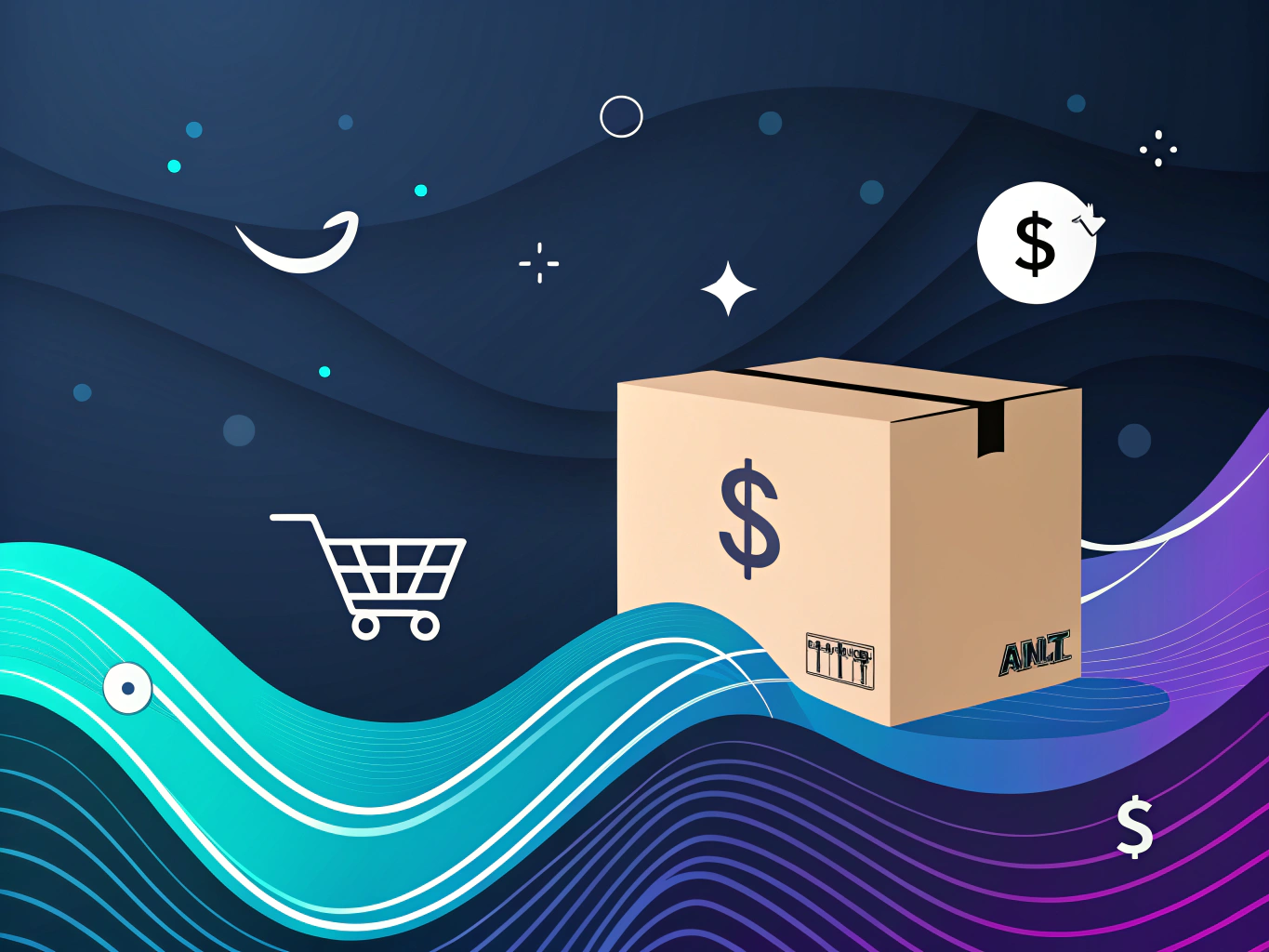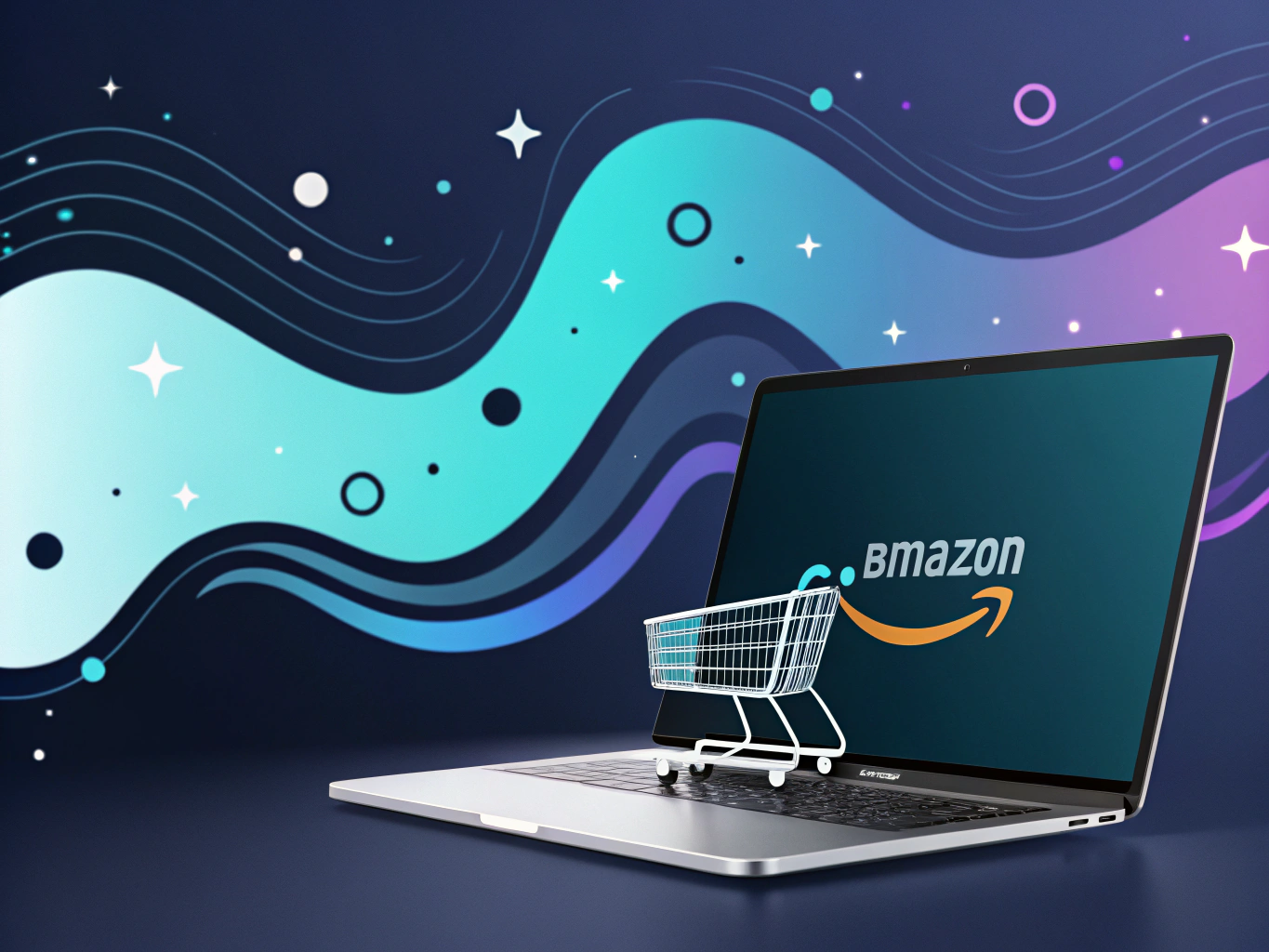Let’s address the elephant in the room: can you sell things on Amazon? Not only can you, but you probably should. While everyone’s debating whether AI will replace jobs or if TikTok is killing traditional commerce, Amazon’s marketplace has quietly become the default “everything store” for nearly half the planet. For those looking to get started, understanding how to start an Amazon business can be a game-changer.

Here’s the thing though – selling on Amazon isn’t like setting up a lemonade stand on your front lawn. It’s more like opening a store in the world’s busiest shopping mall, except this mall has over 300 million active customers and operates 24/7. In 2023 alone, third-party sellers moved over $300 billion worth of products through Amazon’s marketplace. That’s not just impressive; it’s mind-bending. For beginners, identifying best products to sell on Amazon can make a significant difference.
The Real Deal About Amazon’s Market Position

I’ve spent years helping brands navigate the e-commerce landscape, and I’ll tell you this: Amazon isn’t just another sales channel – it’s become the default product search engine for most consumers. Think about it: when was the last time you needed something and didn’t at least check Amazon first? Exactly. Consider exploring what is the most bought item on Amazon to get insights into consumer behavior.
The numbers tell an interesting story. About 63% of all product searches start on Amazon – not Google, not social media, but Amazon. That’s a massive advantage for sellers who can position themselves correctly on the platform. And here’s what really gets me excited: the barrier to entry is surprisingly low, considering the potential reach. If you’re curious about how fees work, understanding the Amazon referral fee is crucial.
Types of Selling Options on Amazon: Finding Your Path
When it comes to how to sell your products on Amazon, you’ve got options – probably more than you realize. It’s like choosing your character class in an RPG; each has its own strengths and learning curves.
First up, you’ve got Individual vs. Professional selling accounts. Individual accounts are perfect if you’re just testing the waters and plan to sell less than 40 items monthly. Think of it as Amazon’s “casual mode.” Professional accounts, on the other hand, are for when you’re ready to play in the big leagues – they cost $39.99 monthly but unlock features that make scaling possible.
Product Sourcing: The Art of Finding What Sells
Now we’re getting to the good stuff – actually finding products to sell. This is where most people trying to sell things on amazon either strike gold or strike out. Let me break down your options:
Sourcing Products That Actually Sell
Retail arbitrage? Wholesale? Private label? These aren’t just buzzwords – they’re different business models for how to sell stuff on Amazon. Each has its pros and cons, kind of like choosing between different superpowers (and yes, I’ve been watching too many Marvel movies).
Retail arbitrage is like treasure hunting – you’re buying products at a discount from retail stores and reselling them on Amazon. It’s how many people start their amazon resell journey. Wholesale is more like building relationships with suppliers and buying in bulk. Private label? That’s when you’re creating your own brand – think of it as being the director of your own movie instead of just selling tickets.
Creating Product Listings That Actually Convert
Your amazon product listing is like your digital storefront. And just like a physical store, you wouldn’t want it looking like it was decorated by a toddler with a crayon. Here’s what makes a listing pop:
- Titles that actually make sense (not keyword soup)
- Images that show your product from every angle (yes, even the boring ones)
- Bullet points that address customer pain points
- Descriptions that tell a story (without sounding like a used car salesman)
When it comes to how to list products on Amazon, think of it as dating profile for your product. You want to be honest, highlight the best features, but not oversell. Nobody likes disappointment on the first date – or when they open their Amazon package.
One strategy that sellers often overlook when optimizing their product listings is Amazon’s review program. If you’re looking for a way to get early reviews on your new product, consider the Amazon Vine Program. Join the program to send free products to trusted reviewers in exchange for honest feedback, which can help boost credibility and conversions.
The Legal Side of Things (Because Nobody Likes Surprises)
Here’s something cool about amazon e commerce that not everyone knows: the first-sale doctrine. It basically means you can legally resell anything you’ve purchased legitimately. But (there’s always a but), you need to be careful with branded products. Some brands are more protective than a mama bear with cubs.
And yes, you can sell used things on amazon – but only in certain categories. It’s like a secondhand store with very specific rules. The key is understanding Amazon’s condition guidelines, which range from “Like New” to “Acceptable.” Just remember: one person’s “Like New” might be another person’s “What the heck happened to this?”
Let’s get real for a second: building a sell Amazon business isn’t just about listing random stuff and hoping it sells. It’s about creating a sustainable operation that can weather the storms of market changes, competition, and whatever else Amazon throws your way. And trust me, as someone who’s been in the trenches of e-commerce, the right foundation makes all the difference.
Getting Started as an Amazon Seller

Can you sell things on Amazon? Hell yes, you can. And not just in theory – we’re talking about tapping into a marketplace that’s basically become the digital equivalent of the Roman Empire (minus the togas and gladiator fights… though competition can get pretty fierce).
Look, I’ve helped countless brands navigate the Amazon jungle, and here’s the truth: while everyone’s obsessing over whether they can sell on Amazon, the real question should be how to do it right. It’s like having access to the world’s biggest shopping mall, but you need to know which entrance to use and where to set up shop.
Setting Up Your Seller Account: The Foundation of Your Empire
First things first – you’ve got two paths to become an amazon seller: Individual or Professional. Think of it as choosing between a food truck and a restaurant. The Individual account is perfect if you’re planning to sell fewer than 40 items monthly (hello, side hustlers!). The Professional account ($39.99/month) is your ticket to the big leagues if you’re serious about building an actual business.
Here’s what you’ll need to open an amazon store:
- Government-issued ID (because Amazon needs to know you’re a real person, not a clever AI)
- Bank account info (where that sweet, sweet revenue will flow)
- Tax information (because even Jeff Bezos can’t escape taxes)
- Phone number (for those “your account needs attention” moments)
Understanding Amazon’s Seller Policies (AKA The Rules of the Game)
Remember how your parents had rules about not running with scissors? Amazon’s policies are kind of like that, but for selling stuff. And trust me, you want to pay attention here – I’ve seen too many sellers get their accounts suspended because they thought guidelines were more like… suggestions.
Meanwhile, those leveraging the Amazon Influencer Program often ask, ‘How much do Amazon influencers make?’ The answer varies widely, with some earning passive income through affiliate commissions and others turning it into a full-time business.
When it comes to how to sell your products on Amazon, you need to understand their category restrictions. Some categories are like VIP clubs – you need special permission to get in. Want to sell jewelry? Medical devices? You’ll need approval first. It’s not just about what can I sell on Amazon as a new seller – it’s about what you’re allowed to sell.
Scaling Your Amazon Business Without Losing Your Mind
Once you’ve figured out how to open an Amazon store and got your feet wet, scaling becomes the next big challenge. It’s like leveling up in a video game – each level brings new challenges and requires new skills. If you’re feeling stuck or unsure about optimizing your business, working with an Amazon FBA coach can help streamline your operations, from sourcing products to mastering fulfillment strategies.
Going Global: More Than Just Checking Boxes
When considering how to become an Amazon seller in international markets, remember that each marketplace is its own beast. European customers have different expectations than American ones, and don’t get me started on the complexities of selling in Japan (though the opportunity there is massive).
For those wondering “what can I sell on Amazon as a new seller” in global markets, start with products that have universal appeal. Tech accessories, home goods, and beauty products often translate well across borders. Just make sure you’re not violating any local regulations – nobody wants their inventory stuck in customs because they didn’t do their homework.
Automation: Your New Best Friend
Let’s talk about how to sell stuff efficiently at scale. Automation tools are like having a team of super-efficient robots (the good kind, not the apocalyptic kind). Use them for inventory management, pricing optimization, and customer service templates. But remember – automate processes, not relationships.
Building a Sustainable Amazon Business: The Long Game

Look, I’ve seen countless sellers jump into Amazon thinking they’ll make a quick buck. They’re like those AI startups that promise to revolutionize everything overnight – spoiler alert: they don’t. What actually works is playing the long game, and here’s where things get interesting.
Performance Metrics That Actually Matter
Can you sell things on Amazon successfully long-term? Absolutely. But you need to watch your metrics like a hawk watches its prey (minus the whole swooping down part). The key performance indicators (KPIs) that separate the winners from the “maybe next time” crowd are your Order Defect Rate (keeping it under 1%), Perfect Order Percentage (aim for 95%+), and Customer Response Time (under 24 hours).
Think of these metrics as your business’s vital signs. Just like how your Apple Watch bugs you about your heart rate, Amazon’s going to bug you about these numbers – and for good reason. They’re not just arbitrary hoops to jump through; they’re indicators of how well you’re serving real humans who want their stuff, and want it now.
Customer Service: Your Secret Weapon
Want to know how to sell your products on Amazon successfully? Here’s the plot twist: it’s not just about the products. It’s about making customers feel like they’re buying from a human, not a faceless algorithm. Respond to messages quickly, handle returns gracefully, and for the love of all things Prime, don’t get defensive about negative reviews.
Future-Proofing Your Amazon Business
The question isn’t just “can you sell things on Amazon” anymore – it’s “how do you stay relevant on Amazon?” The marketplace is evolving faster than AI models are being released (and that’s saying something).
Emerging Trends You Can’t Ignore
Voice commerce is becoming huge – optimize your listings for Alexa searches. Sustainability isn’t just a buzzword anymore – customers actually care about eco-friendly packaging and products. And if you’re not thinking about how to sell used items on Amazon through their renewed program, you’re missing out on a growing market segment.
Building Your Brand Beyond Amazon
Here’s something most guides won’t tell you about how to start Amazon FBA: don’t put all your eggs in the Amazon basket. Yes, Amazon’s great for selling things, but building your own brand identity is crucial. Think of Amazon as your main stage, but you need other venues too.
For those looking into how to sell stuff long-term, consider developing your own website, building an email list (yes, they still work), and establishing a social media presence. When you’re wondering “can you sell things on Amazon for free,” remember that while starting might be relatively inexpensive, investing in your brand’s future is priceless.
The Bottom Line: Your Amazon Journey
Whether you’re exploring how to open Amazon store opportunities or scaling an existing operation, success on Amazon is a marathon, not a sprint. It’s about building systems that scale, relationships that last, and a brand that stands out in an increasingly crowded marketplace.
For those still wondering “can you sell used things on Amazon” or “what things can you sell on Amazon,” the opportunities are vast. From retail arbitrage to private label products, from used books to brand new innovations, the platform supports countless business models. The key is finding your niche and serving it exceptionally well.
Remember, Amazon’s not just a marketplace – it’s an ecosystem. Your success depends on how well you can navigate it, adapt to its changes, and build something that lasts. Start small, think big, and never stop learning. The future of e-commerce is being written right now, and you’ve got a chance to be part of that story.
And hey, if you’re feeling overwhelmed, remember: every successful Amazon seller started exactly where you are now. The difference between those who make it and those who don’t often comes down to persistence, adaptability, and the willingness to learn from mistakes. So what are you waiting for? Your Amazon journey begins now. For more detailed insights, read about how to sell on Amazon.
👉👉 Create Photos, Videos & Optimized Content in minutes 👈👈
Related Articles:
- Best Products to Sell on Amazon: 10 Proven Winners 2024
- Amazon Reselling in 2024: Beginner’s Success Blueprint
- List Products on Amazon: Pro Tips for Higher Sales – ProductScope AI
Frequently Asked Questions
Can you sell things on Amazon?
Yes, you can sell things on Amazon by creating an account on Amazon Seller Central. Once registered, you can list your products in the appropriate categories, set your prices, and manage sales through Amazon’s platform. This allows you to reach millions of potential customers worldwide.
Can you sell used things on Amazon?
Yes, you can sell used things on Amazon, but there are specific categories where used items are allowed, such as books, electronics, and home goods. Amazon has guidelines for used products which must be adhered to, ensuring the items are accurately described and meet Amazon’s quality standards. Sellers need to clearly mention the condition of the item in their listings.
How can you sell things on Amazon?
To sell things on Amazon, start by registering for a seller account on Amazon Seller Central. Choose between an Individual or Professional selling plan based on your needs, then list your products with detailed information and images. Finally, manage your inventory and fulfill orders using either Fulfillment by Amazon (FBA) or by handling shipping yourself.
Can you sell things on Amazon for free?
Technically, you can start selling on Amazon without upfront costs for listing items using the Individual selling plan, which charges a fee per item sold instead of a monthly subscription. However, there may be additional costs involved, such as referral fees and fulfillment charges, depending on how you choose to ship your products.
What things can you sell on Amazon?
You can sell a wide variety of things on Amazon, ranging from books and electronics to home goods and apparel. However, some categories may require approval before listing, and certain items are restricted due to legal or safety concerns. It’s important to review Amazon’s category guidelines to ensure your products can be listed.
About the Author
Vijay Jacob is the founder and chief contributing writer for ProductScope AI focused on storytelling in AI and tech. You can follow him on X and LinkedIn, and ProductScope AI on X and on LinkedIn.
We’re also building a powerful AI Studio for Brands & Creators to sell smarter and faster with AI. With PS Studio you can generate AI Images, AI Videos, Chat and Automate repeat writing with AI Agents that can produce content in your voice and tone all in one place. If you sell on Amazon you can even optimize your Amazon Product Listings or get unique customer insights with PS Optimize.
🎁 Limited time Bonus: I put together an exclusive welcome gift called the “Formula,” which includes all of my free checklists (from SEO to Image Design to content creation at scale), including the top AI agents, and ways to scale your brand & content strategy today. Sign up free to get 200 PS Studio credits on us, and as a bonus, you will receive the “formula” via email as a thank you for your time.
